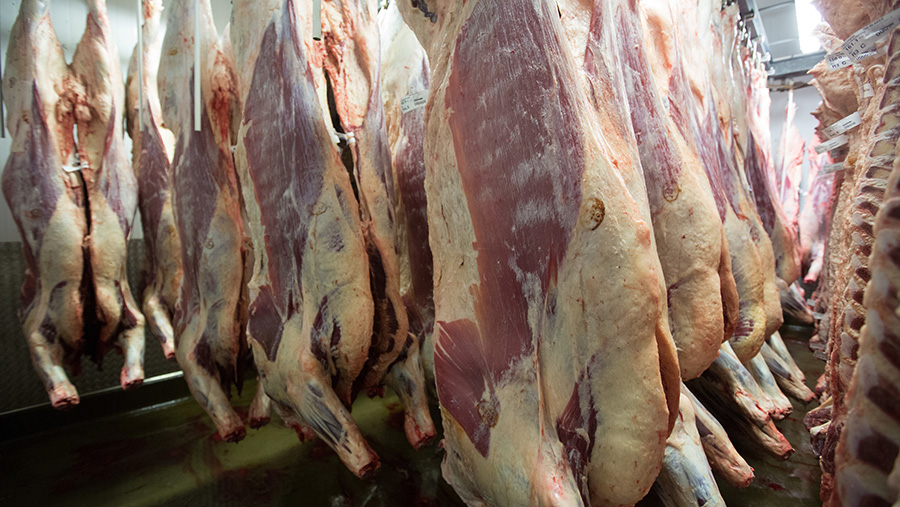Opinion: There’ll be no beef to grade if we carry on like this
 © Tim Scrivener
© Tim Scrivener My late grandfather would have given you a knowing smile at complaints from beef farmers about the lack of transparency regarding carcass classification once their cattle have been sold deadweight.
Over a successful 50-year farming career he steadfastly refused to sell cattle deadweight on the basis that “once they’ve got your bullock on the hook they’ve got you on the hook too because they are the only bidder”.
Granddad farmed in different, and some would say, more privileged times.
With a little help from his seven sons and six daughters he could walk his fat bullock along the road to his local market town, Lewes in East Sussex.
When he got there the market ring would be crowded with dozens of local butchers competing to buy his bullock.
Complex carcass classification
That bullock didn’t have to conform to a complex carcass classification “grid” but simply had to appeal to buyers.
And in terms of “transparency” what could be more transparent to buyer and seller than a winning bid?
All bar one or two of Lewes’ butchers disappeared decades ago when the first supermarket was built in the town centre (my father counted 11 butchers’ shops close in the town’s high street within a year of Safeway’s opening.)
With Lewes Market emptied of bidding butchers it was soon empty of cattle and it was quickly bulldozed to make way for housing.
It is not only Lewes Market that has suffered from the relentless supermarket-driven advance of deadweight marketing.
The last time I scanned Farmers Weekly market reports barely 10 of the surviving livestock markets in the UK reported sales of more than 100 cattle in a week, and well over a third of markets reported no cattle sold at all.
Thin sales
Liveweight sales have got so thin that although there is now only one surviving livestock market left in my home county even that occasionally reports no cattle entered for sale some weeks.
If they come up with too many more ways of reducing the value of a beef carcass there won’t be any cattle for beef processors to buy, either deadweight or liveweight Stephen Carr
As the deadweight selling of beef cattle has come to dominate, so voices beyond my late grandfather’s have started to raise concerns about this system of marketing.
A system where the buyer determines the price the seller receives through a seemingly ever more elaborate classification process devised by the buyer and sometimes imposed with precious little notice or consultation.
‘Lottery’
With one major slaughterhouse operator now imposing as many as 225 separate carcass classifications, John Royle, chief livestock adviser of the NFU, suggests that “no matter how accomplished you are it’s almost a lottery to pick that bullock and know what is coming back to you”.
He claims some beef farmers are now losing as much as £120 per head as a result of recent changes to carcass grading.
Stephen Hayworth, AHDB market intelligence specialist, is diplomatic when he says that more transparency about carcass classification would “potentially benefit everyone”.
He claims “it would give producers more certainty’ and processors ‘would be able to secure the supply they need”.
But many of us are still reeling from the recent decision by several large beef processors to drop the maximum deadweight carcass from 415kg down to 400kg, with some going down to 380kg.
Even my purebred pedigree Sussex cattle can quickly get to those weights, let alone my larger-framed Limousin cross-bred types.
Retailer pressure
Given the pressures on big retailers to deliver cheap food and improved food traceability it’s not hard to understand their preference for deadweight marketing.
But they do need to be careful.
If they come up with too many more ways of reducing the value of a beef carcass there won’t be any cattle for beef processors to buy, either deadweight or liveweight.
Beef farmers like me, fed up with losing money, will simply throw in the towel.

